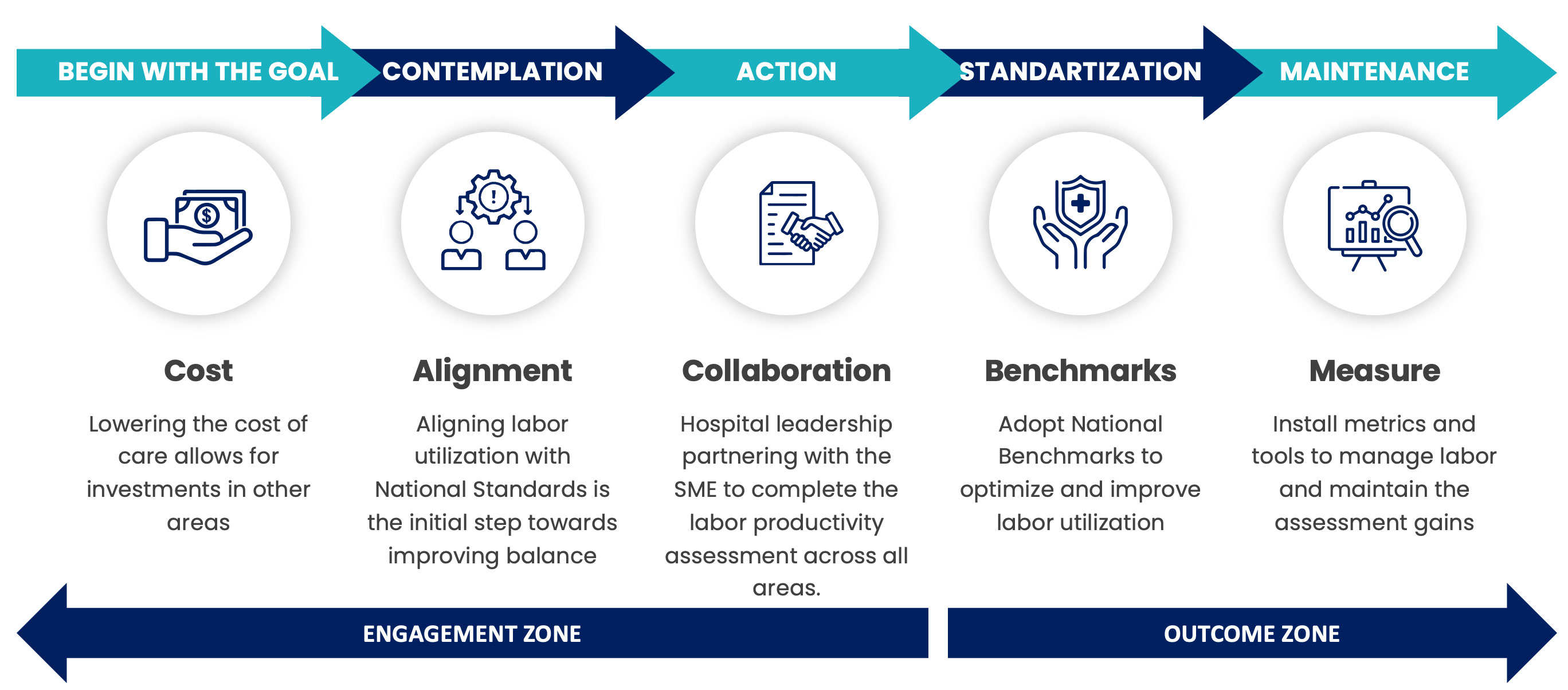Labor Productivity Management for Healthcare Providers
September 11, 2023
“Productivity is never an accident. It is always the result of Commitment to Excellence, Intelligent Planning, and Focused Effort.”
~ Paul J. Meyer
Managing Labor Productivity: Usefulness & Significance
Labor productivity is the lifeblood of any organization. Irrespective of the industry a business operates in or the kind of goods or services it offers, any organization that isn’t productive enough will suffer. Extended non-productivity leads to the wastage of both human and financial resources.
Every industry, including healthcare, must manage employee productivity levels. This makes it easy to determine if you are fulfilling customer and business goals and whether there is scope for improvement. Productivity is, after all, essential for any industry. Measuring labor productivity has an impact on how a business operates. Not only does it help address challenges, but it also offers the best workplace environment for the workforce.
Labor Productivity in An Evolving Healthcare Landscape
Healthcare accounts for ~20% of GDP in the United States, making it one of the major pillars of the country’s economy. However, the trajectory of healthcare expenditures rises steadily to outpace GDP growth. This is unsustainable and worrisome at the same time. While the healthcare ecosystem is expected to offer patients access to affordable, convenient, and high-quality patient care, it frequently falls short of this expectation.
The inability of healthcare to contribute significantly to the country’s economic growth is a combined outcome of many factors, including market abnormalities, U.S. healthcare infrastructure peculiarities, and regulatory requirements. However, as the saying goes, ‘Control the things you can control,’ one factor that any kind of healthcare setup can control is its productivity. In hospitals, labor is the largest operating expense. Imagine how reducing the labor by 1% or 2% can have a financial impact on the bottom line of a health system.
Impact of Labor Productivity Management on Healthcare OpEx
Measurement of productivity is essential to optimizing economic output in the healthcare industry. This is because low productivity affects (especially in a competitive labor market) the capacity of a healthcare facility to support the economy in various ways. Hospitals and health systems are under enormous pressure to boost efficiency and lower healthcare costs in a constantly changing healthcare market where they are dealing with narrower margins, more competition, and reduced cash flow. This makes it critical for them to accurately monitor and adjust labor resources. Labor costs, accounting for approximately 50% to 60% of hospital operating costs is one of the key drivers of operating expenses in healthcare.
Labor Productivity Challenges: Are Costs & Productivity Inversely Proportional?
As healthcare leaders recognize that management of labor utilization is essential to maintaining financial health, managing labor costs while ensuring adequate and qualified staff is a challenge. Achieving the ideal balance between safety, employee and patient happiness, and high-quality treatment is necessary for effective labor management.
Below are the specific challenges:
- Awareness: Successful management of labor costs calls for a system capable of tracking and benchmarking labor expenditure. However, many healthcare systems either lack such a system or tool for tracking labor productivity management or do not fully utilize their current systems they have. This often leads to a misunderstanding, which causes scheduling irregularities that affect labor productivity. Additionally, it also leads to underused labor management systems, which no healthcare provider would undoubtedly want.
- Metrics: A critical component of setting up standard metrics is providing hospital management with a concise and comprehensive dashboard focused on truly actionable information. However, the inability to operate at or near medium benchmark targets due to the absence of policies and procedures also leads to lower labor productivity.
Labor Productivity Assessment
If healthcare is to be transformed, it is essential to establish a tried and tested process for assessment of labor productivity. This helps a healthcare provider:
- Prioritize long-term growth over short-term productivity gains that undermine operations.
- Identify opportunities to reduce healthcare expenditure in various ways that reinforce the economy and patient outcomes.
- Deliver higher quality services while reducing non-essential expenditures.
Labor Productivity Program: Objectives and Procedures
Acknowledging that one size does not fit all, we, at Innova Solutions offer an innovative approach for labor productivity and labor management solutions. By combining experienced resources with 50+ years of experience in optimizing Labor Productivity in a healthcare set-up, the AWS Marketplace helps clinical resources manage the business of delivering Cost Effective Care.
100 + Hospitals
12+ Custom & Standard Labor Management Systems
80 Operation Resources Trained per Engagement
Business Outcomes of Focusing on Labor Productivity Engagement
- Robust Operations: Establishes the capacity to respond to changing volume and labor requirements within the current time period.
- Operational Efficiency: Maintains cost savings by balancing labor requirements with fluctuating volumes.
- Peace of Mind for Business Continuity: Minimizes significant fluctuations in labor usage and overtime expenditures.
Connecting the Dots to Conclude
The management of labor productivity in healthcare appears to be a cumbersome task. This is because there are several aspects that require attention to comprehend the bigger picture. By selecting the appropriate tools for managing labor productivity, healthcare organizations can lay the foundation for a successful venture, accelerate business growth, ensure business continuity, and enhance long-term profitability. For example, if an average fully benefited employee costs $75,000/year and there 1,500 employees the total labor costs would be $112,500,000 annually. Interestingly, even 1% decrease in labor costs adds $1,225,000 to the bottom line of a health system!
Better labor productivity in healthcare can positively impact the quality of healthcare services and ultimately boost customer satisfaction. Employees play a crucial role in the healthcare sector, and as a result, their performance and productivity significantly impact the quality of services provided to patients and ultimately their health and emotional well-being.




